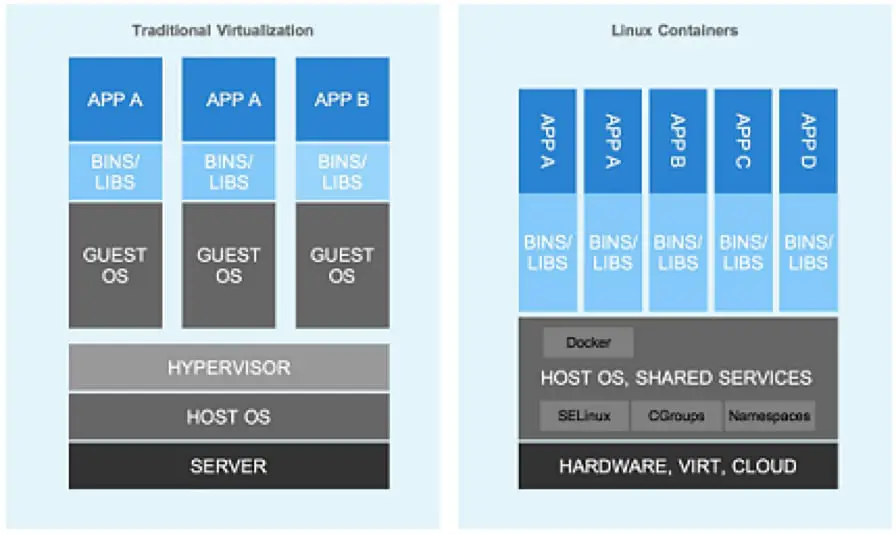Introduction to Linux Containers (LXC)

Linux Containers (LXC) is a lightweight virtualization technology that allows multiple isolated Linux systems to run on a single host operating system. It provides a way to package and isolate applications and their dependencies, making it easy to deploy and manage them in a consistent and portable manner.

How LXC Works

LXC creates containers by using Linux namespaces and control groups (cgroups). Namespaces provide isolated network, file system, and process environments for each container, while cgroups limit their resource usage, such as CPU, memory, and I/O.
By isolating containers, LXC enables multiple independent applications to coexist on a single host without affecting each other’s functionality or security. Each container has its own dedicated resources and can run without interfering with the host or other containers.
Benefits of LXC
LXC offers several advantages:
- Isolation: Containers provide strong isolation, ensuring that applications and their data remain protected and isolated from each other.
- Lightweight: LXC containers are highly lightweight, requiring minimal overhead compared to traditional hypervisors.
- Portability: Containers are portable across different Linux hosts, making it easy to deploy applications in a consistent manner.
- Resource Efficiency: LXC leverages cgroups to efficiently manage resource consumption, optimizing resource utilization and preventing performance degradation.
- Cost-Effective: LXC is an open-source technology, making it a cost-effective alternative to proprietary virtualization solutions.
Use Cases for LXC
LXC is widely used in cloud computing, DevOps, and containerized applications. It is ideal for:
- Microservices: Running small, self-contained microservices in isolated containers to improve scalability and flexibility.
- DevOps: Facilitating development and testing workflows by providing isolated environments for each component of an application.
- Cloud Bursting: Scaling applications to the cloud on demand by using LXC containers to create additional capacity when needed.
- Legacy Applications: Migrating legacy applications to containers to leverage their benefits without significant code modifications.
- Security: Enhancing security by isolating applications and their vulnerabilities within dedicated containers.# Linux Containers: An Introduction To Lxc
Executive Summary
Linux containers are a lightweight virtualization technology that provides a way to isolate applications from each other and from the underlying operating system. This can improve security, reduce resource consumption, and make it easier to deploy and manage applications.
Introduction
Linux containers are created by using the Linux kernel’s cgroups and namespaces features. Cgroups allow you to control the resources that a container can use, such as CPU, memory, and disk I/O. Namespaces allow you to isolate a container’s network, filesystem, and other resources.
Benefits of Using Linux Containers
There are many benefits to using Linux containers, including:
- Security: Containers isolate applications from each other, which can help to improve security.
- Resource efficiency: Containers are lightweight and use fewer resources than virtual machines.
- Portability: Containers can be easily moved between different hosts.
- Scalability: Containers can be scaled up or down to meet the needs of an application.
- Manageability: Containers are easy to manage and can be automated.
Types of Linux Containers
There are two main types of Linux containers:
- Process containers: Process containers are the most basic type of container. They isolate a single process from the rest of the system.
- Virtual machine containers: Virtual machine containers are more complex than process containers. They create a virtual machine that runs inside of a host operating system.
Use Cases for Linux Containers
There are many use cases for Linux containers, including:
- Microservices: Containers can be used to package and deploy microservices.
- Cloud computing: Containers can be used to run applications in the cloud.
- DevOps: Containers can be used to streamline the development and deployment process.
- Big data: Containers can be used to run big data applications.
- Artificial intelligence: Containers can be used to run artificial intelligence applications.
Conclusion
Linux containers are a powerful tool that can be used to improve the security, resource efficiency, portability, scalability, and manageability of applications. They are a valuable addition to any IT toolkit.
Keyword Phrase Tags
- Linux containers
- Docker
- Kubernetes
- LXC
- Virtualization


This article provides a clear and concise introduction to Linux containers and their benefits. Containers are becoming increasingly popular due to their ability to isolate applications, improve resource utilization, and simplify deployment. LXC is a popular container technology because of its lightweight design and simplicity.
While containers offer advantages as described in the article, their security can be compromised in shared hosting environments. Additionally, the management of multiple containers can be complex, requiring specialized tools and expertise.
For those interested in further exploration, Docker is another prominent container platform that merits consideration. It provides additional features for managing and deploying containers, including support for container orchestration.
The article fails to address the potential performance overhead associated with containers. While lightweight, containers still incur some virtualization costs that can impact application performance, especially in resource-intensive use cases.
Containers, touted as lightweight, can ironically add complexity to the system, introducing new layers of management overhead. Managing containers, images, and dependencies can become a convoluted task.
Oh, the joy of containers! Isolating applications in their own little worlds, like tiny hermits. But hey, who needs a streamlined system when you can have a plethora of fragmented containers cluttering up your host?
Containers, the modern-day matryoshka dolls of computing! You open one, and presto, there’s another one nested inside. It’s like an infinite regression of virtualized environments, a never-ending labyrinth of containers within containers.
While containers provide isolation, it’s crucial not to overlook the shared kernel vulnerability. A breach in one container can potentially compromise the entire host system and other containers. Robust security measures must be implemented to mitigate these risks.
Containers offer cost savings compared to traditional virtualization, but licensing fees and management expenses can add up when dealing with numerous containers. A thorough cost-benefit analysis is recommended before adopting a container strategy.
The advent of cloud-native platforms has made container adoption even more compelling. Services like Amazon ECS and Azure Container Instances provide managed container environments, reducing the operational burden and enabling seamless scaling.
Containers may struggle to match the isolation and performance of hardware virtualization. Latency-sensitive applications, such as databases or real-time systems, might experience performance degradation when running in containers.
The beauty of containers lies in their simplicity. Unlike virtual machines, they don’t require a full-blown guest operating system, making them more lightweight and easier to manage.
Containers excel in portability across different platforms and cloud providers. Applications packaged as containers can be easily deployed and run on any compatible environment, fostering greater flexibility and choice.
Containers are inherently more eco-friendly compared to virtual machines. Their lightweight nature and optimized resource utilization contribute to a greener and more sustainable computing landscape.